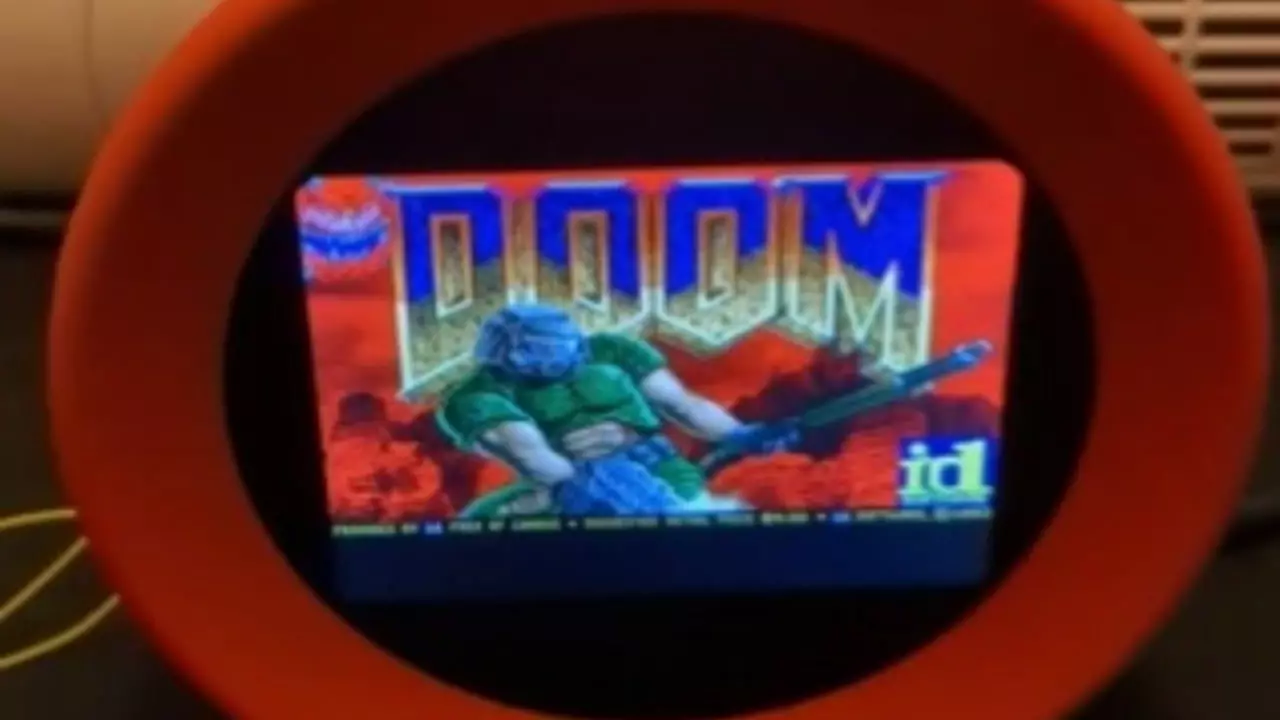In an era dominated by smartphone applications and sophisticated gaming consoles, it seems inconceivable that a mere clock could capture the imagination of tech enthusiasts and gamers alike. Yet, Nintendo’s recent introduction of Alarmo—a sound clock that doubles as a whimsical gaming device—has successfully managed to do just that. While much of the gaming community has focused on Nintendo’s latest music app for smartphones, Alarmo’s unexpected functionality presents an intriguing confluence of nostalgia and innovation.
Alarmo came into the spotlight thanks to a user known as ‘GaryOderNichts’, who specializes in reverse engineering for platforms like the Wii U. His actions have shown how user creativity can breathe life into devices that were initially limited to their core functions. By deploying custom code on Alarmo, Gary made it possible to run the classic first-person shooter Doom directly on the clock. Such advancements indicate a ripe potential for Alarmo to serve as a new frontier for indie developers and retro gaming advocates, encouraging them to push the boundaries of what these devices can achieve.
What makes Alarmo’s compatibility with Doom especially captivating is not merely the fact that one can play the game, but how this gameplay is executed. Using the clock’s buttons and knobs to navigate a pixelated world filled with demons is a surreal experience—one that highlights the absurdity and charm of blending mundane digital routines with lifelike combat scenarios. Imagine snoozing your alarm only to be greeted by a demon or a low-fi scream as you take control of the iconic Doom Slayer using your morning alarm clock. Alarmo thus becomes not only a reminder of time passing but also an imaginative playground for gamers.
Despite the excitement surrounding this innovative gameplay, Gary has acknowledged a significant limitation: the absence of audio support. This is primarily due to memory constraints imposed by the USB loader, which demands that the playable content be compressed to fit. This technical hiccup raises questions about the future of Alarmo and whether further updates can address such limitations to enhance the gaming experience. Fans speculate on what additional features Nintendo might implement—right alongside dreamy wake-up tunes, perhaps a more robust gaming engine that allows for an even broader range of retro games.
While the novelty of a playable Doom on an alarm clock is fascinating, it raises an essential point: the significance of community in technological innovation. With Gary sharing source codes and tutorials, the door has opened for enthusiasts to engage with Alarmo in ways that extend beyond passive consumption. As players experiment and share their experiences, a niche but passionate community is poised to form around this device. The potential for collaborative creativity only amplifies the allure of Alarmo.
Nintendo’s Alarmo stands at a unique crossroads where timekeeping meets interactive gaming. As we delve deeper into the future of devices like Alarmo, one can only wonder what extraordinary combinations await us and how they can reshape our perceptions of everyday gadgets.

